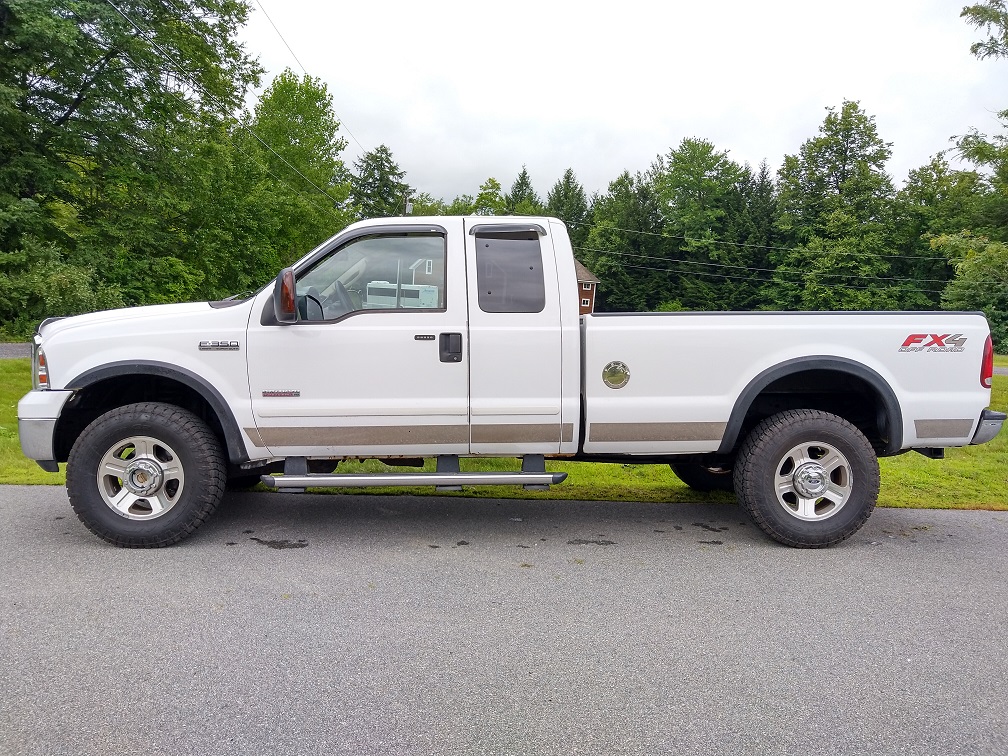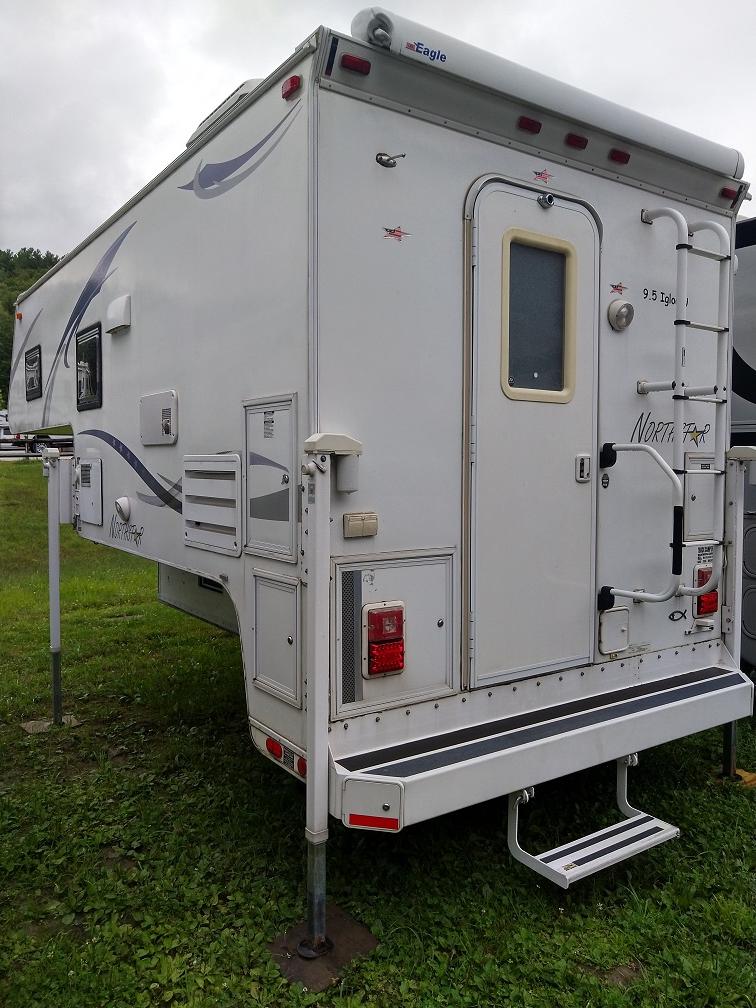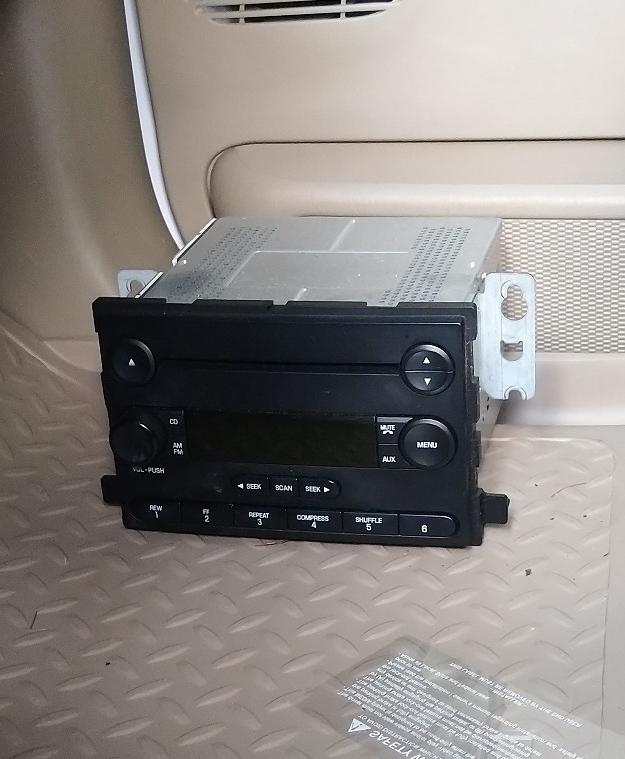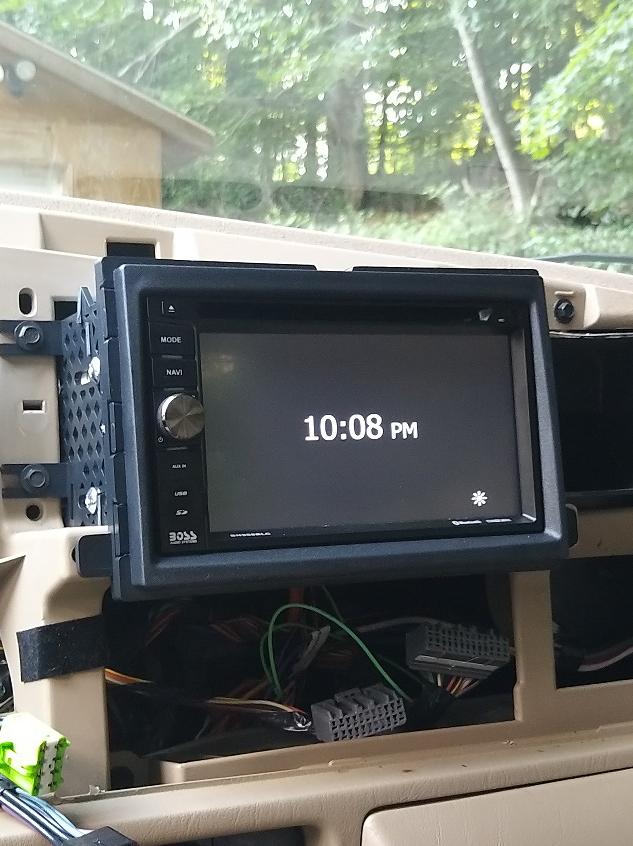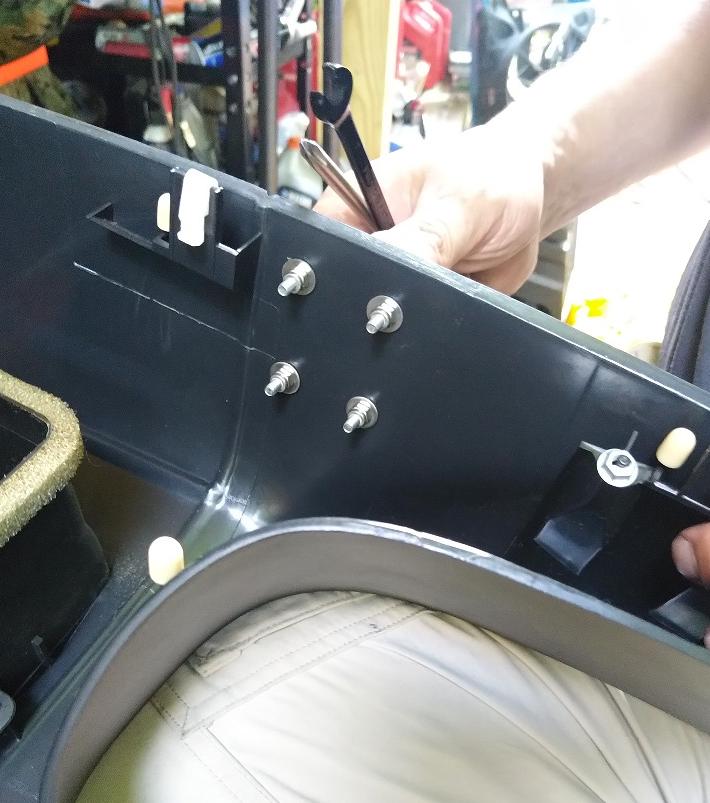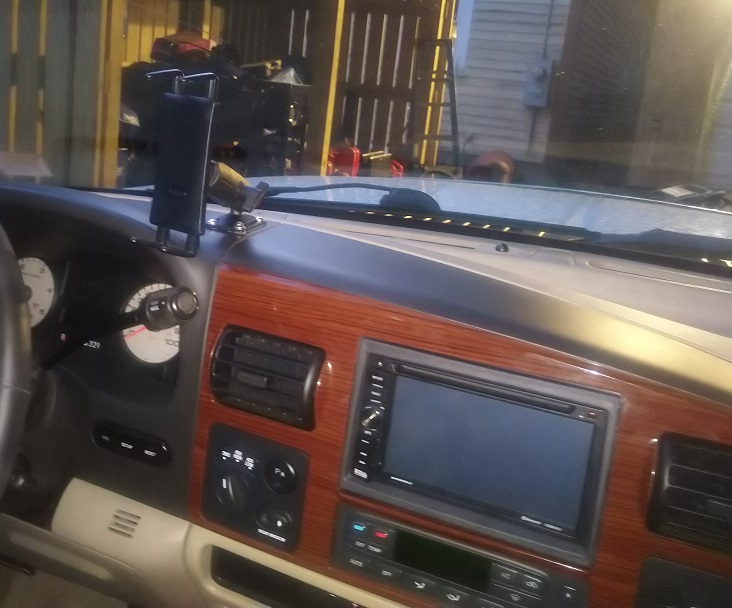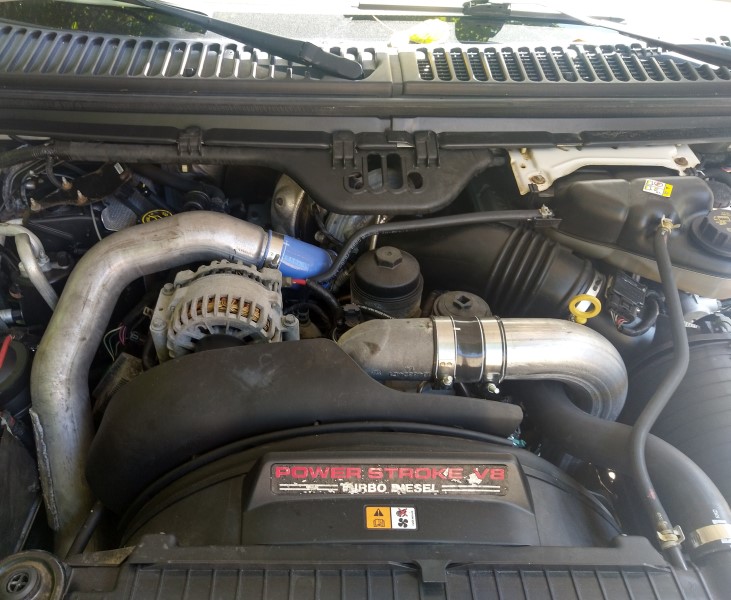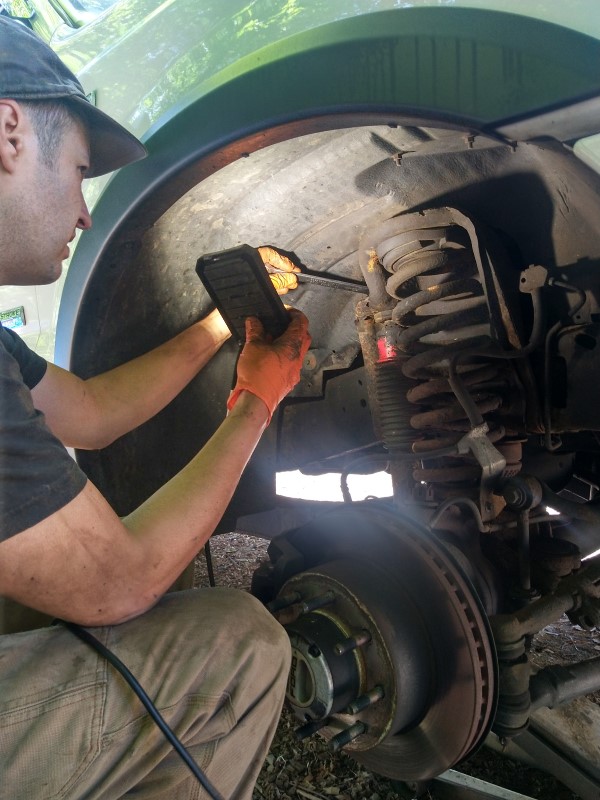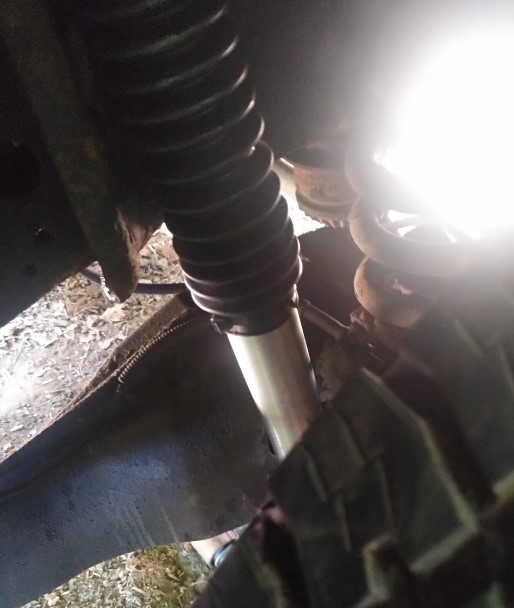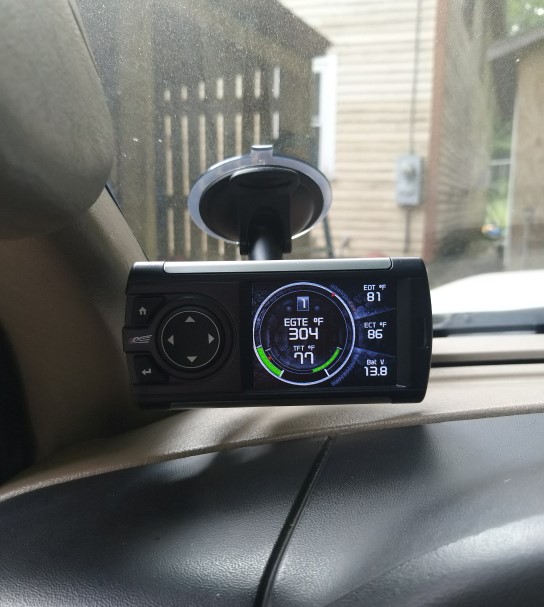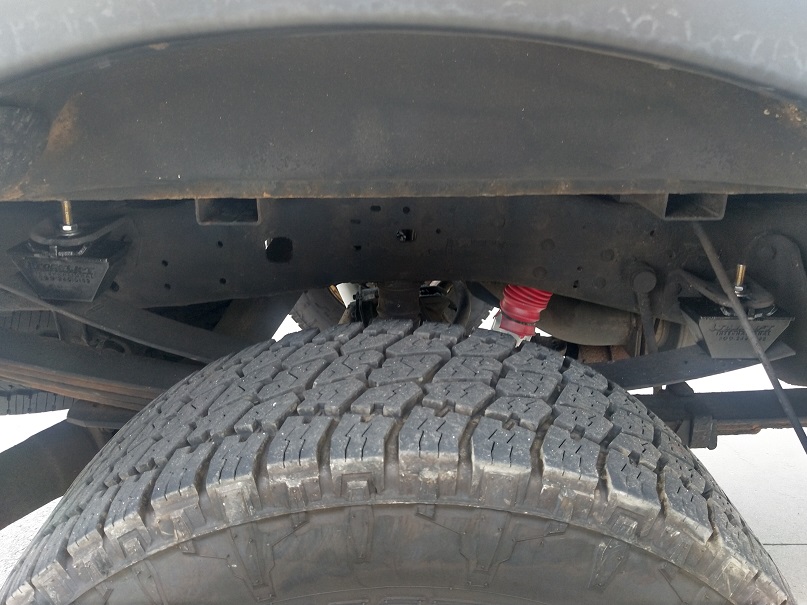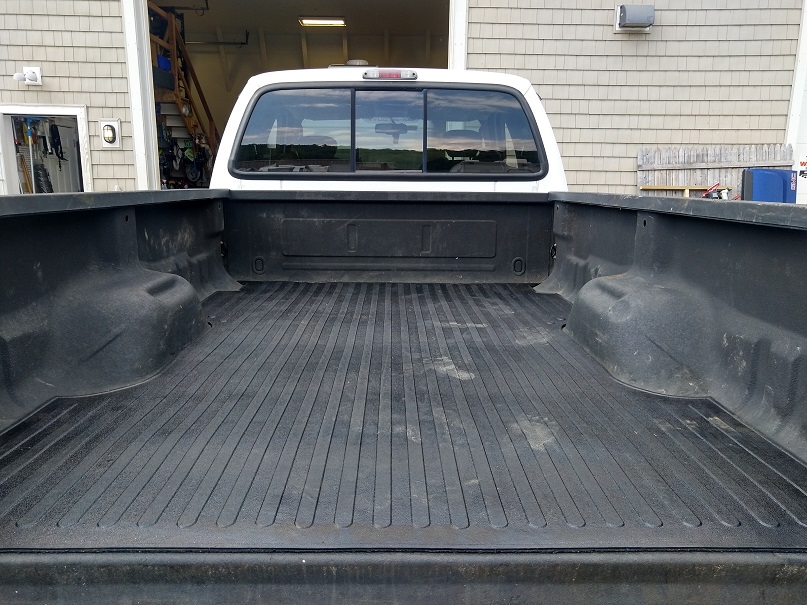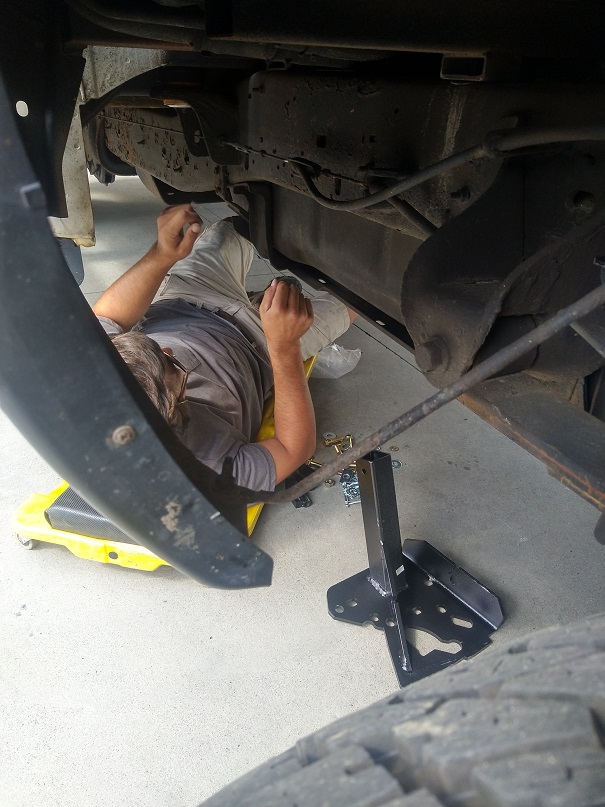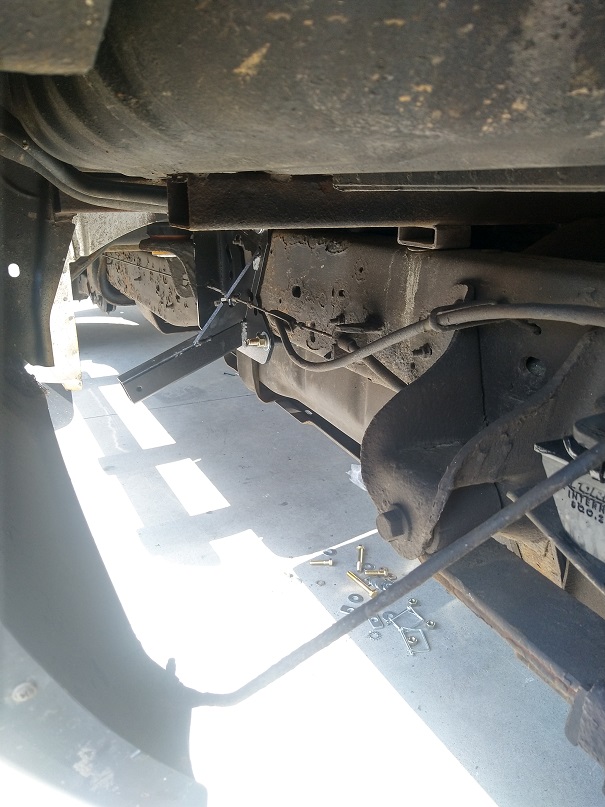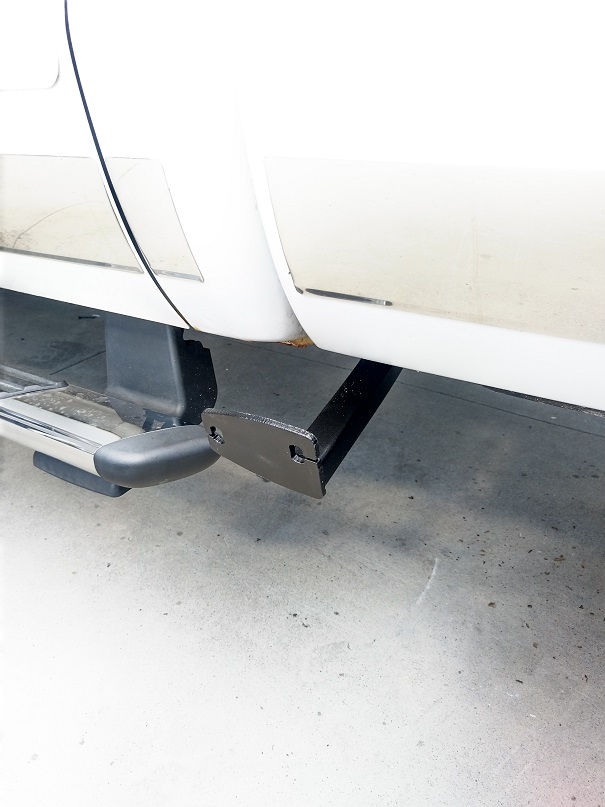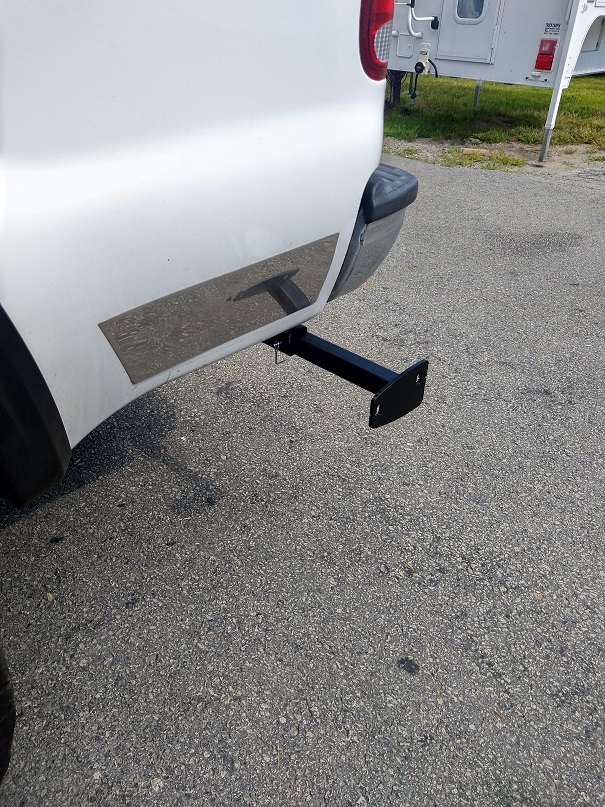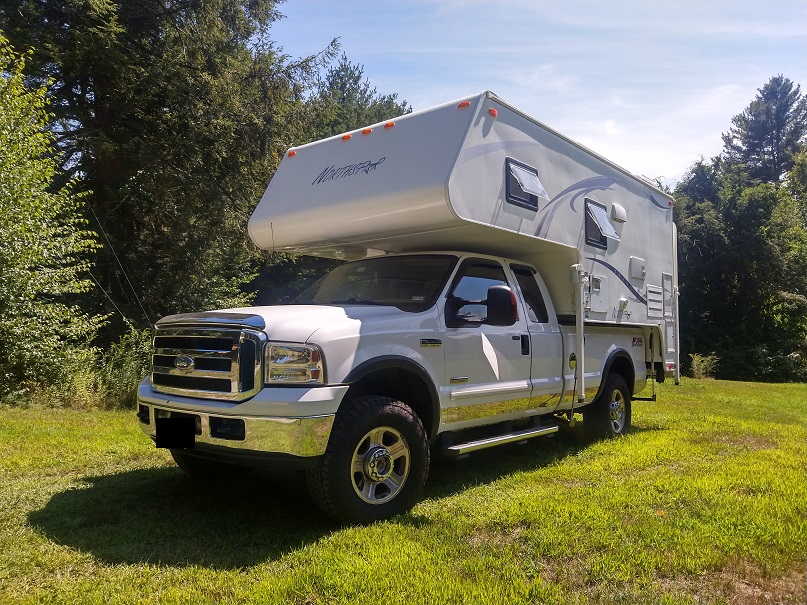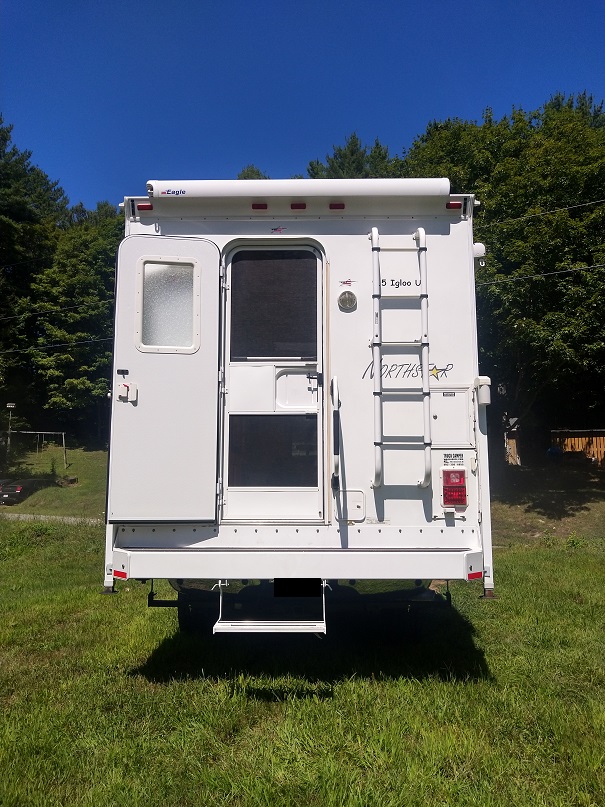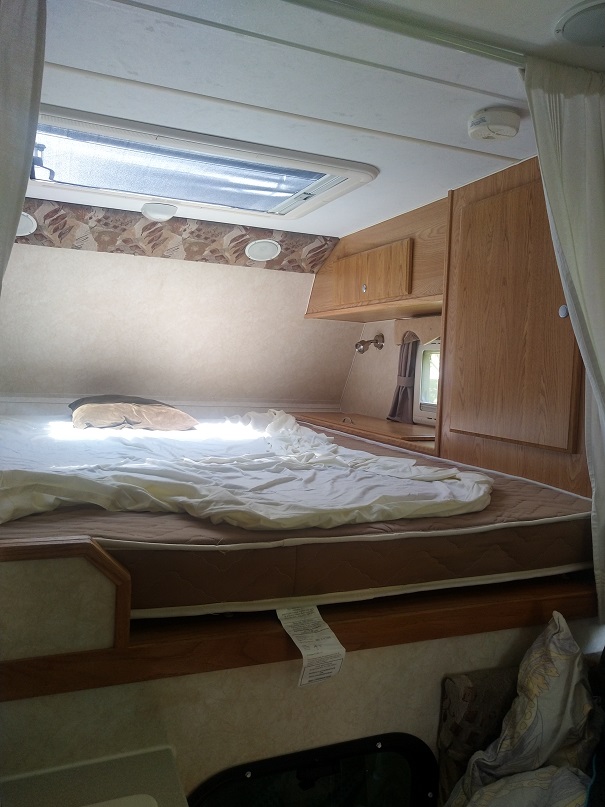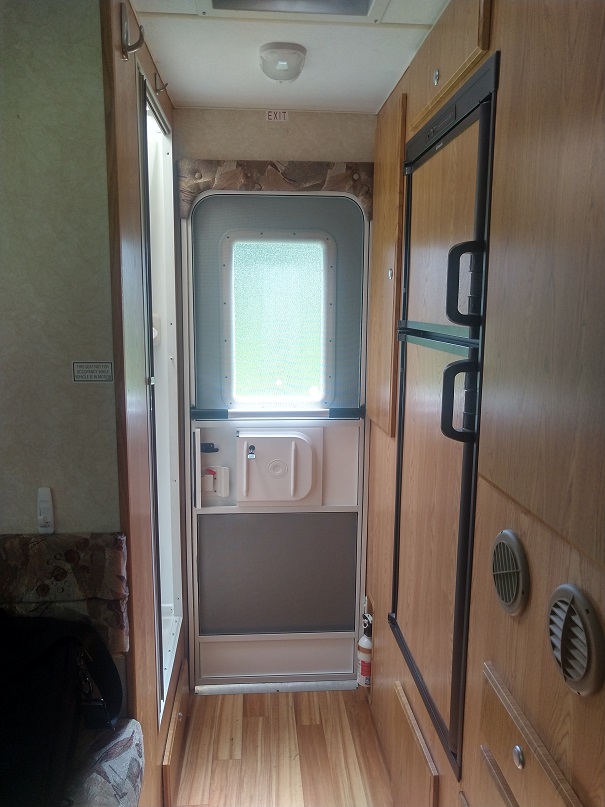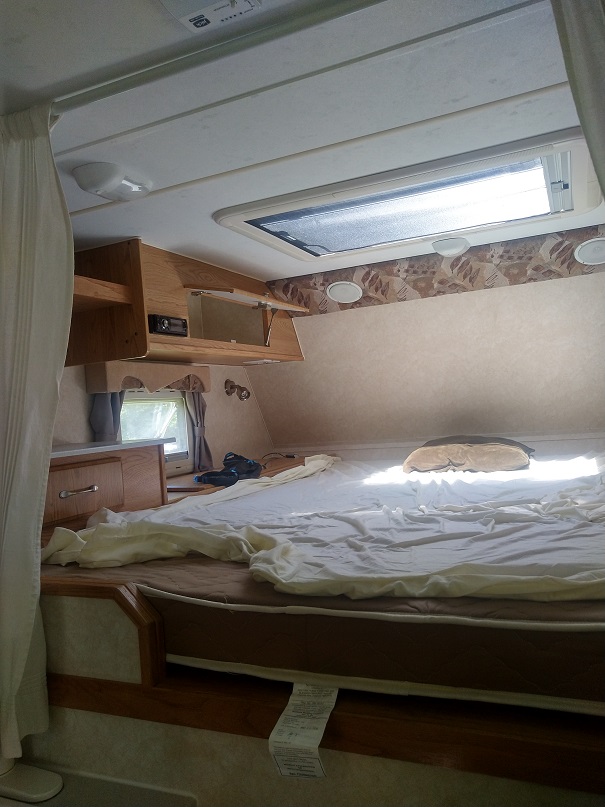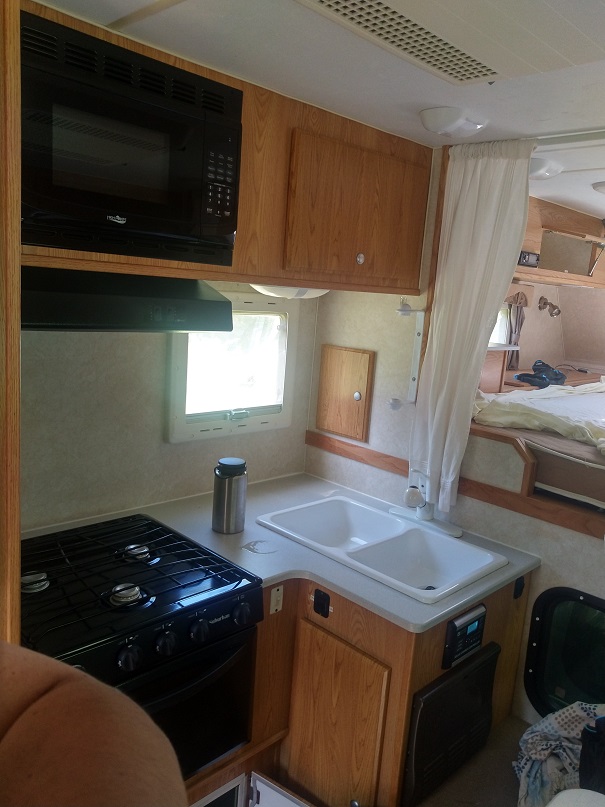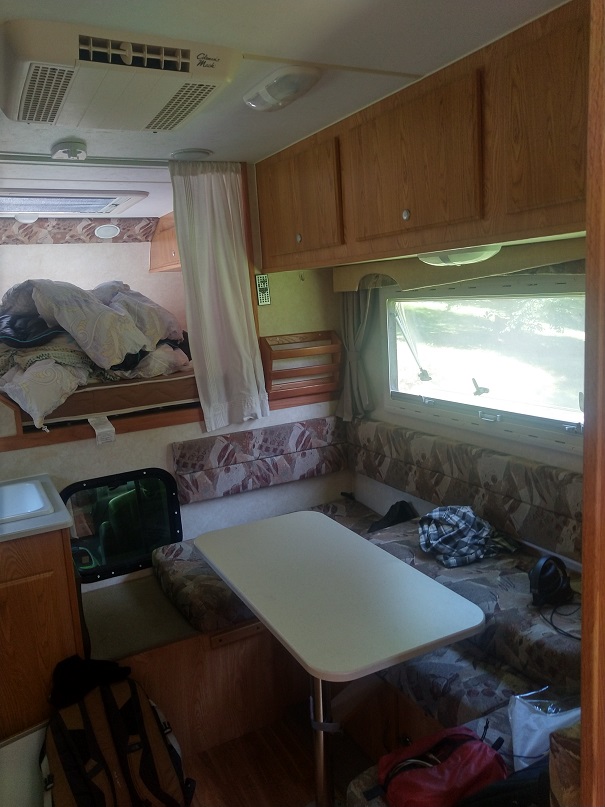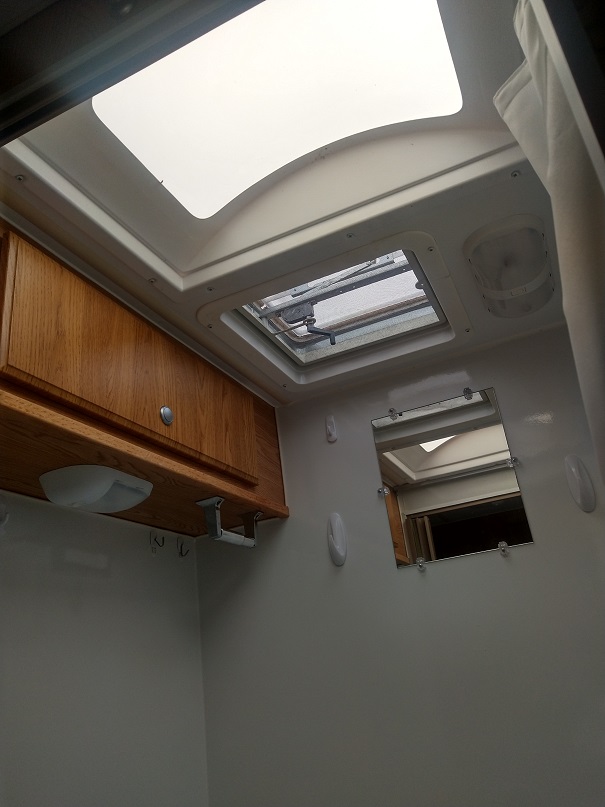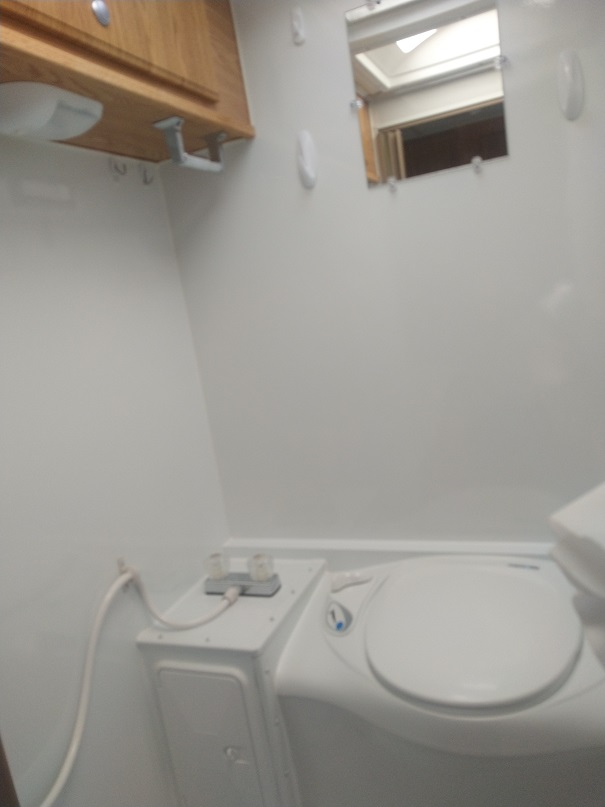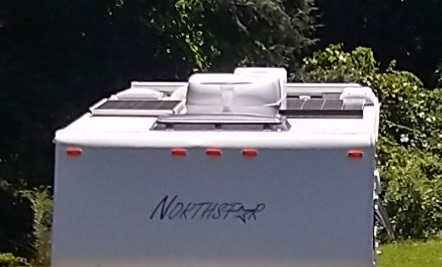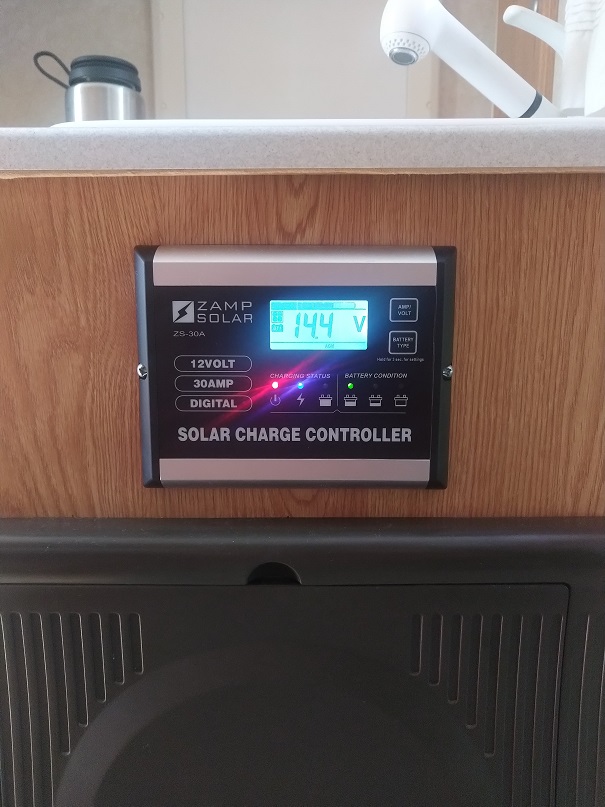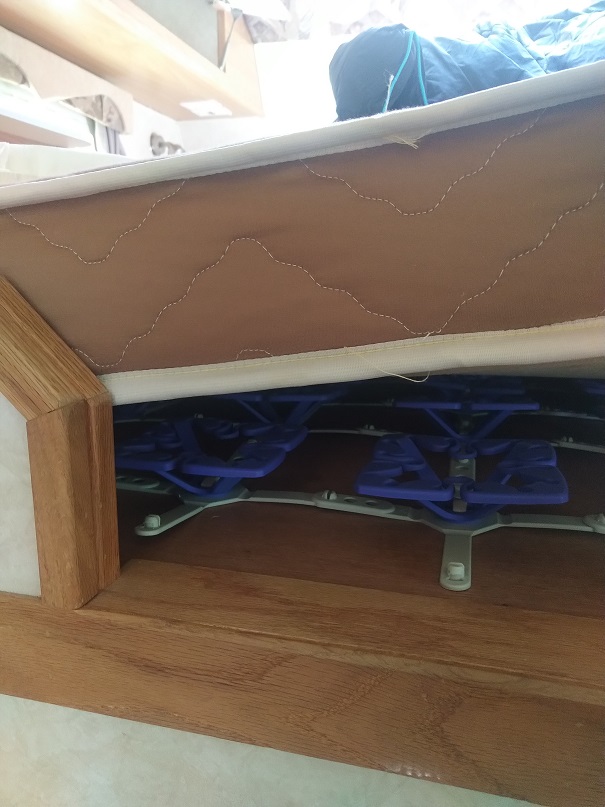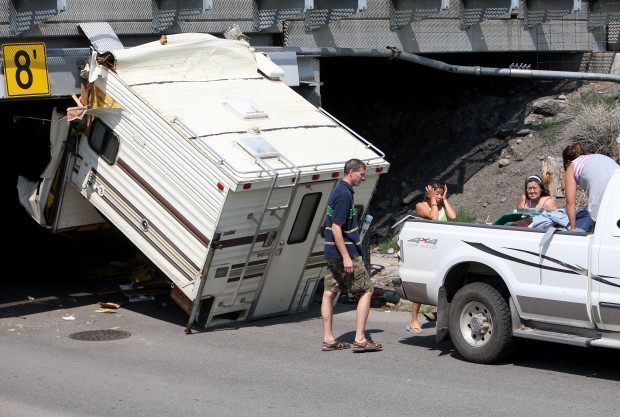Here is the plan/progress to date:
I have been living in my rig for a week now. I am still in New England, bouncing around between relatives’ places. I have not hooked up my camper connections to anything since I got the camper (water, electricity, etc.). I haven’t felt the need to, as my solar system and batteries have never dipped below 12.6 volts at night, despite the entire week being mostly overcast and rainy here. For that matter, I haven’t used a lot of electricity, either. I mostly just occasionally use the lights and the radio. During the day, I plug in a cigarette-lighter-type 150 watt inverter to charge my laptop, batteries, phone, etc. There are two cigarette-lighter plugs in the camper – one in the cab over near the bed and one in the dinette area. In fact, I do not have a generator yet, and now I’m not sure if I need to get one. I know some full-timers do not carry a generator, at all, and I don’t plan to use the microwave or AC, at least for now. I can get a generator anywhere, so I think I’ll skip it for the time being.
The camper has a 40-gallon fresh water tank and a 13-gallon gray water tank. I have used about 15 gallons of fresh water and have emptied the gray water tank once by attaching a garden hose to the gray tank outlet and dumping in my aunt’s garden (with her permission, of course). There is no smell to the gray water, as I have only taken showers and cleaned dishes with biodegradable soap. I have not drunk the water from the fresh water tank yet, but I do plan to sterilize the tank and lines and drink from it in the future.
The Thetford cassette toilet is ingenious. If I did a van buildout, I would probably install one. It has its own, separate 3 gallon fresh water tank that you can fill from the outside shower head. It flushes with a push button. I have emptied it once, at a cousin’s house. You can dump the cassette in a residential toilet and the toilet will flush itself. I didn’t realize that residential toilets worked that way, but it does work! Afterward, I rinsed the cassette out, put it back in its compartment, popped in a chemical packet, and continued on with my day. It’s a very convenient and smart system that frees you from ever needing to visit an RV dump station. The cassette holds 4.5 gallons and even has wheels and a retractable handle, so you can wheel it behind you into a gas station or Wal-Mart bathroom and empty it there. It can also be emptied in pit toilets, port-a-potties, etc. Because of the chemicals, it shouldn’t be emptied in nature, but if I am boondocking, I can dig cat-holes for serious business and water thirsty plants for less-serious business.
I used the furnace on two nights when the temps dipped down to the 40’s. The furnace kicked on for a little while and then kicked off when the temps inside the camper rose enough. The camper seems to hold the heat pretty well, although I’m sure the batteries and the propane would probably drain quickly if the furnace was running constantly in freezing temperatures. As mentioned in an earlier post, I may eventually get an Olympian Wave catalytic heater.
I cooked on the stove a few times. It works like any propane stove. I have not tried the oven yet.
Based on the advice of the truck camper dealership, I have been taking showers by running the water heater for 15 minutes, turning it off again, and using the hot water in the 6-gallon water heater tank. That gives me plenty of hot water for a good shower.
I went back to my cousin’s house and finished sorting out my stuff. I threw another 3 bags of stuff away and put the rest of it into two boxes in his attic. So that’s done.
Regarding driving, my first experience driving the truck with the camper on top was at night, from the dealership back to my cousin’s house 30 minutes away. It was definitely a “white knuckle” experience, but not because the rig didn’t handle well – in fact, it drove smoother than it did without a load, which a lot of truck camper owners report, probably because a 1-ton truck’s suspension is designed to work and carry a load – but rather because I was nervous about the height and the top-heavy nature of a truck camper. My rig 11’ 6” tall at the highest point on the truck camper, which is very tall if you have only ever driven sedans before. I had done a lot of research before getting my camper, trying to follow Otto von Bismark’s excellent maxim: “Only a fool learns from his own mistakes. The wise man learns from the mistakes of others.” And boy are there some doozies when it comes to truck campers. Observe these nightmare-inducing images:
This is a truck camper that rolled while taking a corner. Of course, this truck appears to have mud tires and a lift kit, which exacerbated the top-heavy factor, but still… (image belongs to truckcamperadventure.com)
And this is the scenario I fear the most. Not paying attention to height restrictions and… (image belongs to truckcamperadventure.com)
I have nightmares about absentmindedly ignoring a sign saying “no trucks or buses” and getting onto a parkway and slamming into a 10ft height limit bridge, hearing the terrifying, sickeningly-violent crunch of metal, wood, and plastic being crushed and ripped in ways they weren’t designed to do, the roof of my camper being ripped off, getting stuck in the tunnel and feeling pretty darned sorry. It has taken me a week of driving to finally relax a little and realize that most roads are designed to carry trucks, the ones that don’t generally have signs warning off trucks, and most places do a good job of keeping trees trimmed. I’ll have to be a lot more vigilant on national forest and BLM land.
The truck is handling well with the F350’s suspension (including the stock Ford sway bar), Rancho shocks, and the Torklift upper StableLoads. I don’t think I need to make any other modifications. Truck gauges show the truck is healthy while carrying the camper: oil and cooler temperature delta is usually only a few degrees, exhaust gas temperatures staying low, transmission temperatures good, etc. I haven’t taken my rig on a long, highway climb yet, but I suspect it will do fine. With the gauges, I’ll know if there are problems.
I mentioned in an earlier post in this thread that I wanted to check to see if the spare tire compartment would fit the larger 295/70R18 tires my truck has. It does not. So I’ll be depending on good tire repair plug kits, a good air compressor, and the 275/70R18 spare tire will only be used in a true emergency to hobble myself to a repair shop.
Regarding connectivity, I’ve always lived in houses or apartments, and while traveling, I have always stayed in hotels or with friends and family, so internet access was never really a problem. Full-timing in my camper, I’ll want more than the crappy prepaid phone plan with limited data that I’ve always had. I shelled out for a Verizon plan for my phone for better coverage, as well as a Jetpack plan for my laptop. We’ll see how that works out once I start traveling seriously.
I’ve got separate insurance policies for the truck and camper and two separate roadside assistance policies with my insurance company and with Good Sam. I’m also getting an air-compressor, bottle jacks, recovery straps and chains, and come-a-longs to help myself (and others) out of jams independently.
The next step for me and my new traveling life is to get a few more things done to the camper (toilet cassette has a small leak that needs repairing, outdoor shower hose is broken, under-camper support wood needs weatherproofing, etc.). And then, in a few weeks, I’ll start heading south to Georgia again to see my cousin. And from there, my plan is to start heading west and begin the true adventure, and hopefully make it to the RTR come January.
The good:
The small size: Cleaning such a small space is a breeze (a few wipes with a Clorox sheet, and the floors are “mopped”). Additionally, parking and maneuvering are easy, as my footprint is basically the same as a pickup truck. I have had no problem parking in normal parking spots.
Construction quality: Truck campers tend to be built to a high standard, relative to other RV’s, and so the quality of construction is apparent in the design and materials.
Cassette toilet: Definitely a winner for the reasons outlined above.
Plentiful solar/batteries/quality charger: This applies to any rig.
The bad:
The small size: Storage space is at a major premium, and I worry about weight limitations. I don’t want to load my truck beyond the design specifications of axle and payload capacity, and I’m not sure exactly what I weigh right now. I need to go back to the CAT scales next week with a full fresh-water tank and full diesel tank and see where I’m at. Under payload capacity would be ideal. A few hundred pounds over would be acceptable. 500 pounds or more over would be a problem, and this is very typical for truck campers.
Relative cost: Compared to other RVs and vans, truck campers tend to cost more per square foot of living space. Combined with a good ¾-ton or 1-ton truck, and you are looking at spending significantly more than building out an old van or getting a cheaper, used travel trailer and a smaller, less-capable tow vehicle. You pay for the convenience and advantages of a truck camper.
The ugly:
Accessibility: Elderly or mobility-challenged individuals probably wouldn’t want a truck camper. The step up from the ground to the camper can be quite tall, although you can mitigate that with additional steps. The step up from the living space to the cab over sleeping area is also very tall and would be hard to mitigate without a custom solution. Tall people would fit inside the camper living space at the dinette level just fine and would be better-suited to the tall step-ups, but the sleeping space in the cab over would probably feel cramped for a tall person. I am 5’ 8”, and I can sit up comfortably in the cab over. In fact, I like hanging out there, listening to music, playing with my computer, etc. If I straighten my back and try to reach the ceiling with my head, I can do it, but a taller person would likely not be able to sit up in any position without hitting his head and would probably only use that space for sleeping.
The height and top-heaviness: You saw the pics above!
